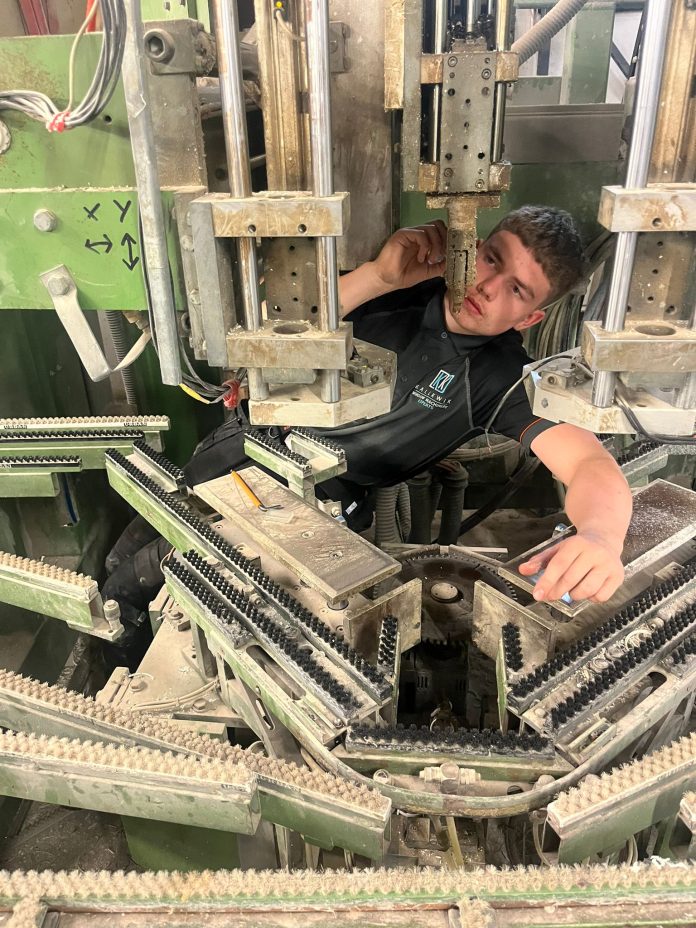According to figures from The Institution of Engineering and Technology (IET), less than half of new engineering recruits have either the necessary technical or soft skills needed for work within the industry. Josh Goodwin, Technical Director for KallKwik Machinery, discusses how the sector can promote the next generation of engineering talent and invest in the future of the industry.
The engineering sector employs over 5 million people, that’s 7 percent of the UK’s population working in an industry that remains a mystery to most new workers. A 2020 report by Engineering UK recorded that almost half of 11 to 19-year-olds said they knew almost nothing about what engineers do.
This attitude doesn’t seem to only apply to the younger generations. Further figures from the IET estimate a shortfall within Science, Technology, Engineering, and Maths (STEM) sectors that equates to ten unfilled roles per business. This sort of disparity has not only left many firms crying out for new talent but has also limited how much companies are willing to reinvest in themselves to create the engineers of the future.
Although this has been a problem for several years, factors such as the COVID-19 pandemic have meant that the sector has suffered huge setbacks. More than 200,000 workers left the industry during the pandemic for a multitude of reasons, including a lack of steady work and uncertainty over their employer’s future.
Fifty percent of these workers were aged 45-55. The industry is actively losing some of its most experienced and skilled workers, and it doesn’t seem to be overly concerned about spurring on the people that will be leading the sector in the years to come.
A skill issue?
Alongside the huge numbers of individuals leaving the sector, there exists the missing millions of trained workers who are unable to find work within the STEM sector, as well as the ignored reserve of 50–64-year-olds who aren’t employed but want to be. There’s a well of talent and knowledge that remains untapped. However, most older workers leaving the industry will be unlikely to want to retrain in problem or higher-demand areas. Put simply, we need to focus on the next generation of talent.
The most effective way for companies to bolster their engineering teams and begin to address the problems within the sector is to begin re-investing in apprenticeships and provide jobs and opportunities for anyone who’s eager to start working within the industry. But why aren’t younger people entering the workforce?
Desk jobs and work in distribution centres often have a broader appeal than factory work. But in my day-to-day work with fabricators and customers, I see so much pride and attention to detail from the teams on the factory floor. It would be great to get the younger generations to experience this opportunity to work in our industry.
Change starts with us
Unfortunately, the kind of vocational education that a lot of us engineers went through is not what it used to be. Technical colleges are increasingly rare, even with the emphasis placed on STEM learning currently, and it’s becoming harder and harder for businesses to find younger people wanting to train for jobs in factories or manufacturing facilities.
How can we reinvigorate people’s interest in a career in manufacturing and engineering? We could begin to take a leaf out of the books of some of the country’s largest engineering firms. Companies like Rolls Royce, Siemens, and Toyota still have a broad appeal to younger people.
This isn’t just down to their prestige, but the fact that these employers are offering technical, hands-on training and work that will set their apprentices up for life.
As for KallKwik? We’re committed to hiring young talent that’s keen to get to grips with the industry. Take our apprentice, Elliott, who joined KallKwik after being unhappy that his previous role didn’t give him nearly enough time to learn hands-on with machinery. This was something we were keen to remedy, giving him the balance of training and hands-on experience.
None of us have all the answers, this is a complex issue, but it stands to reason that when there aren’t enough skilled workers available, we should take the initiative and start to invest in our own future. The bottom line is that the work is there, and people want to do it. By opening up the way we recruit, and being more proactive in how we engage young workers, we can start to turn the tides in our favour.












